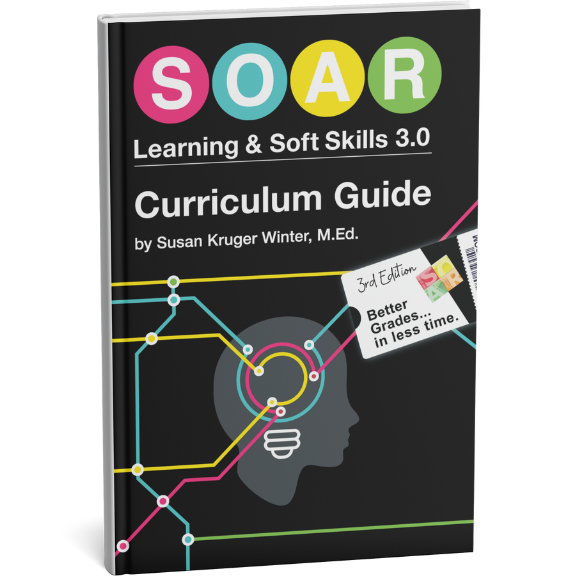Why Teachers Feel So Ineffective!
“A good teacher is a self-abuser!” One of my grad-school professors said this in class years ago. I was still teaching full-time and his words pierced right through me! “Yes!” I thought, “that is so right!”
I came home every day, frustrated that I didn’t get to something I wanted to cover that day or that a particular lesson did not go very well, struggling to figure out just how I was going to help a particular student, worried about where another student was headed in life…my mind was constantly battling dozens of “couldas,” “wish-I-wouldas,” and “how-can-I”s that I was miserable.
This Is The Song Of Every Good Teacher!
But, the problem is, we hold ourselves to an unrealistic standard. We are led to feel inadequate when we hear the educational gurus speak about how their work with students was so perfect.
The government insists that there is absolutely no excuse for “leaving a child behind.” But none of this hub-ub matches any premise established by the real world.
Meet My New Friend, Pareto
You may not necessarily be familiar with the name, “Pareto,” but you’ve probably encountered Pareto’s 80/20 principle in some way. The best way I can describe it (because I’m not a mathematician) is to share some examples:
- You likely wear 20% of the clothes in your closet 80% of the time.
- In the United States health care system, 20% of patients use 80% of health care resources (source: http://bit.ly/3kOCQ0).
- 80% of crimes are committed by 20% of criminals (source: http://bit.ly/b74yMt).
Let’s apply this concept to an educational context…In any given instructional situation, 80% of students will pass with normal instruction. Of the remaining 20%, 80% of those students will pass with additional assistance, but 20% will still struggle. Of those remaining 20%, 80% will finally understand the information with alternative instruction, but 20% will continue to struggle….and the pattern will continue. This is essentially the mathematical break-down of the three tiers of Response to Intervention (RTI).
If we know this to be true, (and RTI indicates that the World of Education has accepted this mathematical principle), then it punches holes in two common expectations/assumptions held by teachers, which are:
- One teacher, with a defined set of resources, a finite amount of training (none of us are Superman), and limited influence on the student’s 80% of time outside of school (students only spend 20% of their hours in school) can reach everyone. As 80/20 illustrates, there are SEVERAL layers of required intervention before the “bottom 20%” will likely respond. This is not a responsibility ONE individual teacher can shoulder on her own.
- There is no excuse for leaving ANY child behind. Mathematically speaking, there likely will always be someone who does not achieve success. RTI may significantly reduce the number of students, but the fractals will continue on indefinitely in the grand scheme of things.
I just spoke with a teacher from Minnesota last week. She is using SOAR® as an integral part of her school’s intervention program. These students have all been referred to her program based on their academic performance and/or referrals from other teachers and counselors. A few students have been nominated by their parents. Altogether, she’s working with 60 students and slowly expanding her program to other schools in the district. She had several concerns about students who were not responding to specific elements of the program.
I must admit, I was a little confused. I could tell she understood the material and was teaching it as I usually do, but the reactions she was describing did not match the reactions I typically see. I shared as many alternative tips as I could, when she said something that finally clicked with me.
So, I asked, “How many students are you talking about here?” “Oh,” she said, “about 4-6.” That’s ten percent! According to Pareto, she is actually well ahead of the curve!
I replied, “You must be doing a lot right to only have six students out of 60 that are struggling…” and continued to explain Pareto’s Principle to her. I was not suggesting that she should “give up” on those six students (in fact, we had discussed many additional alternatives and options that she thought might be helpful), but ultimately, I wanted her to celebrate the accomplishments she had made! I wanted her to give herself credit and interrupt the self-abuse cycle that is so common for teachers.
Action Plan
I must re-emphasize that I am not advocating that any teacher should just “give up” once 80% of their students “get it” and leave the remaining 20% behind. Instead, I am simply suggesting that they recognize the limitations in which they are working and give themselves a little credit. Specifically, they should take time each day to recognize and celebrate the “80%” of their accomplishments instead of beating themselves up over the 20% of their challenges.
-Susan Kruger
EB 091117
Six Steps
Conquer the Chaos
Get Our Free Guide & Information on...

"*" indicates required fields
Get Our FREE Curriculum Guide!
The SOAR® Curriculum
The most critical learning, organizing, and communication skills needed for school. Learn more here.
Who’s Using SOAR®?
SOAR® Guarantee
Click here to learn more.




